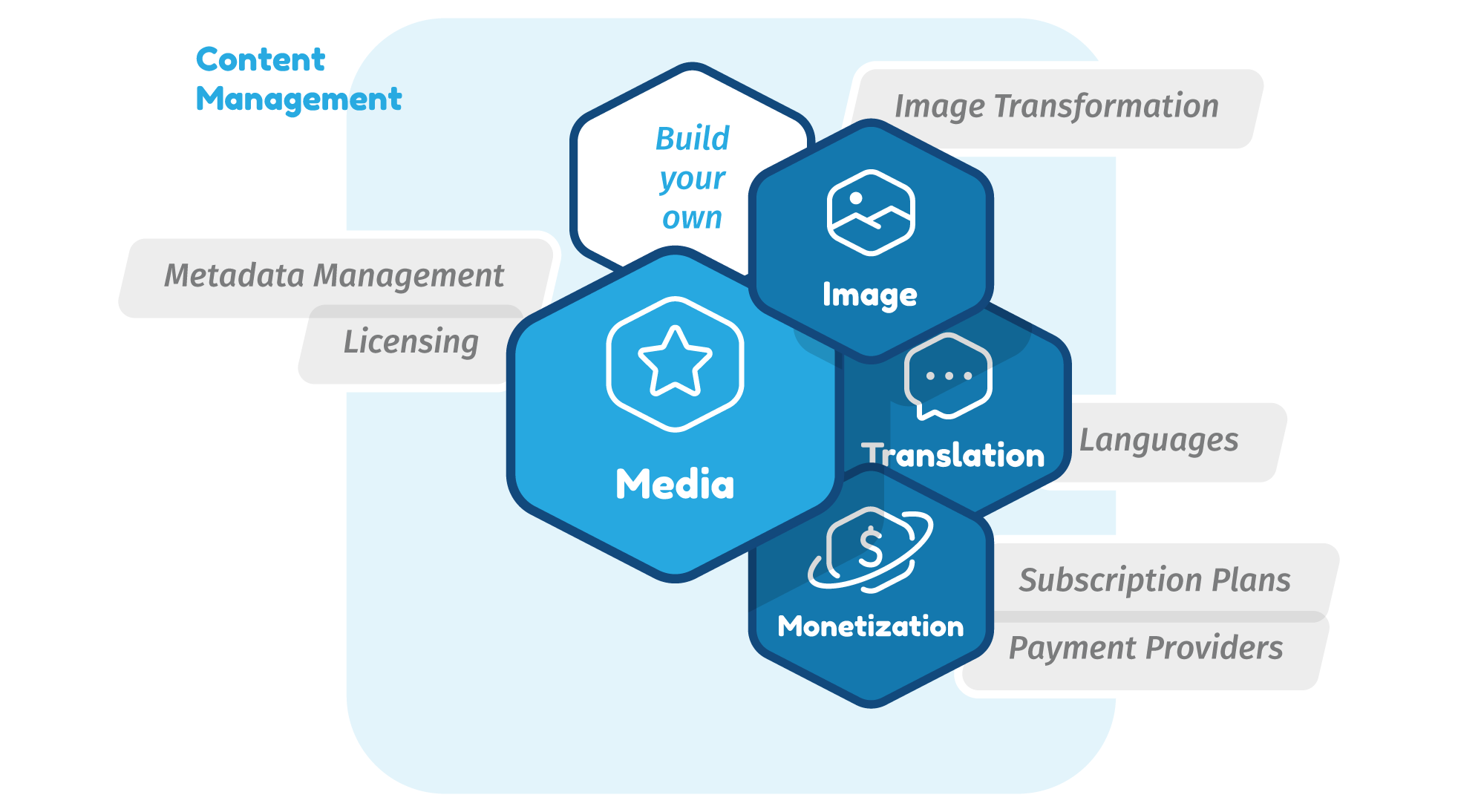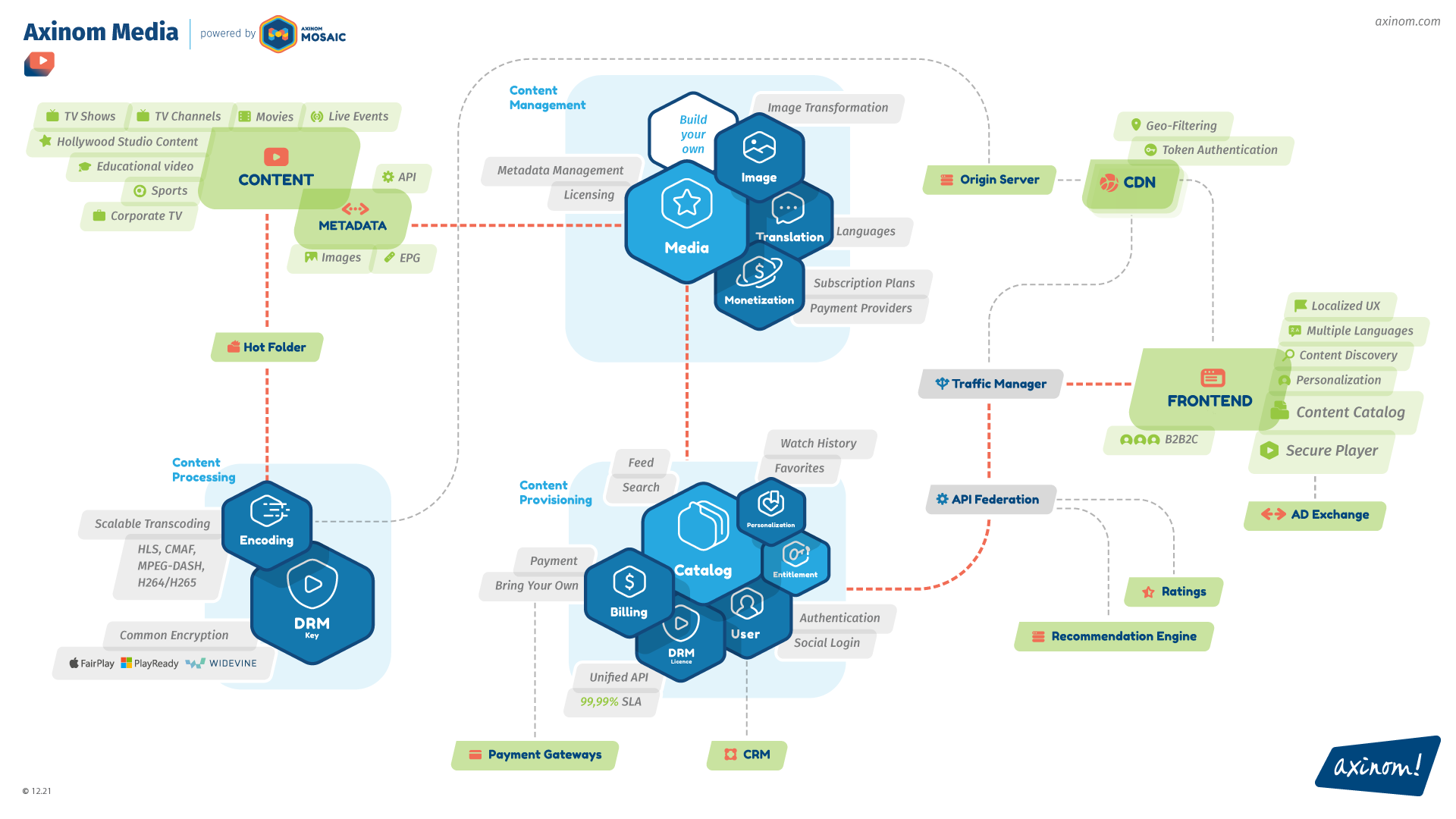

OTT Personalization at Scale
Driving Dynamic User Experiences on Multiple Platforms and Devices.
An avalanche of VOD services has entered the OTT industry in the last few years. According to the Drive New Buyers Report, VOD services launched in the U.S., U.K., and European Union territories have increased by 32%. The number of VOD platforms has surged from 2,270 in 2017 to 3,015 in 2020, with 745 new service launches in just four years. It includes both mass and niche services built for an audience that is rapidly adopting a cord-free life. Kagan’s latest forecasts indicate that cord-cutting is expected to strip away nearly $33.6 billion out of U.S. pay-TV revenues over the next five years.
Many options and low switching costs allow viewers to switch between platforms without having to think twice. This poses a hefty challenge for VOD providers to set themselves apart from other players in order to secure revenue and customer loyalty in a fierce market. For an OTT platform to survive, it is imperative to deliver the right content, to the right audience, at the right time and across all platforms and devices.
Having the best content available is no guarantee of success; a personalized approach is what counts the most towards the viewer experience. For example, 80% of stream time for Netflix is achieved through personalization recommendations. This requires OTT providers to have a deeper understanding of their audience.
“For an OTT platform to survive, it is imperative to deliver the right content, to the right audience, at the right time, and across all platforms and devices."

Addressing the Complexities of Personalization
The complexity in personalization arises from the diverse preferences audiences can have at any given moment. Drilling down from the wider user persona, viewing preferences vary based on the time, mood, place, and even device. For example, OTT platforms can have a higher demand for horror movies closer to Halloween. Satisfying these preferences can feel a bit like laying out an elaborate buffet spread for all three meals on any given day.
The key to addressing these complexities lies with comprehensive metadata management as well as collecting viewer usage data. Metadata adds a vital layer of information that works as an elevator pitch to describe what your content is all about. It achieves this by assigning descriptive properties (titles, synopsis, etc.), relational elements (tags, genres, etc.), translations, and even graphical elements such as image covers to your OTT content. By combining metadata and viewer analytics, OTT providers can fine-tune their recommendation engines to match users to appealing content.
Reaching for the Sky
Most OTT services in existence today came to be after FAANG (Facebook, Apple, Amazon, Netflix, and Google) and thus have to compete with them. Scalability plays a critical role in this.
A large content library, diverse audiences, or a global outlook needs remodeling of the media asset management, editing, security, and distribution workflows. Companies opting for an off-the-shelf solution for their digital media supply chain face an issue in scalability and extensibility. Mostly owing to their limited personalization potential and flexibility.
VOD platforms need to think like software providers and utilize modern development technologies that extend the benefit of flexibility and extensibility. The most significant advantage of such an approach is the inherent scalability that comes with that. A planned modular architecture allows for faster development and maintenance cycles, as well as easy deployment, integrations, and high robustness.
Integrate, Extend, and Bundle
As the competition intensifies, OTT providers need to think and plan ahead on how to monetize their content and services. New and exciting models defying the traditional approach of taking on the competition by yourself are popping up all the time.
More and more VOD providers are combining forces with each other as well as with telco operators. They merge content packages and user bases to create attractive hard or soft bundles for the viewers. A good example of this is the ongoing Sony-ZEEL merger in India, which is in the final stages. Once successful, the consolidation will bring in a lot of synergy for both brands, with Sony doing well with sports content and Zee having a stronghold with regional content.
Such an integrated approach requires a modular backend able to support it. Support for ingesting content from multiple content providers, multiple editor support, customized workflows, recommendation engines, analytics services, and more are not just nice to haves - they are paramount.
On the monetization side, support for commonly used VOD revenue models is a must. As is the ability to create customized models through integrations with various payment providers, CRM systems, and advertising engines.
Axinom’s Content Management Solution (CMS), with its unique interfaces and service-oriented architecture, allows unlimited integrations. Be it external content partners or payment providers popular in a certain region. Through our CMS, customers can independently manage and personalize their OTT service for various regions, geographies, and audiences. Our architecture allows OTT providers to integrate other services and systems, extend the system to explore new opportunities, and bundle with other providers.

Automated workflows are available for content ingestion, transcoding, encryption, packaging, metadata management, advertisement insertion, content publishing, pipeline, and storage management, among others. These integrations and automated workflows make for a robust and scalable OTT backend solution that is perfectly suited for companies looking to launch or scale their VOD and OTT services.









